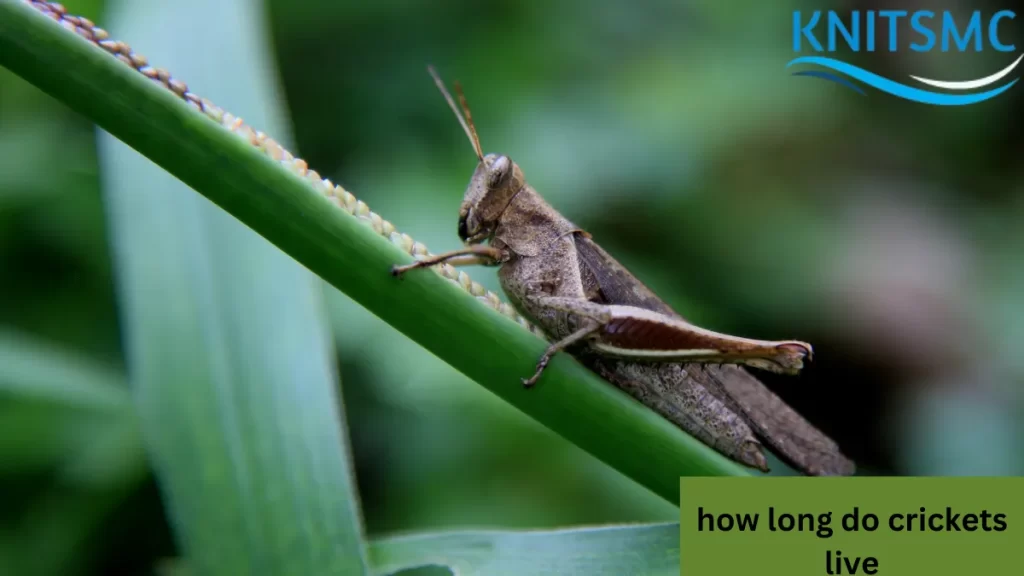Table of Contents
Have you ever wondered how long do crickets live? These little insects might seem to be only around for a short time, but crickets can live longer than most people think. In this article, we’ll reveal the fascinating lifespan of crickets and explore what affects how long they live. Many factors contribute to how long a cricket can live, from their habitat to their diet. Let’s discover everything you need to know about cricket life expectancy!
The Average Lifespan of a Cricket
So, how long do crickets live on average? Generally, crickets live anywhere from 8 to 10 weeks. This lifespan can vary based on species, habitat, and overall health. Many crickets won’t reach their total life expectancy in the wild because of environmental factors and natural predators’ challenges. However, crickets can live closer to their maximum lifespan under ideal conditions.
Different species of crickets have slightly different life spans. For example, home crickets live up to 12 weeks, whereas field crickets typically live about 90 days. Understanding these differences can help answer the question of how long crickets live.
Life Stages of a Cricket: Egg, Nymph, and Adult
We must examine the life cycle of crickets to comprehend how long they live completely. Crickets experience three major stages:
| Stage | Description |
|---|---|
| Egg Stage | Cricket eggs are laid in the soil or other safe places. They stay as eggs for about 2-3 weeks before hatching. |
| Nymph Stage | Once hatched, young crickets are called nymphs. Despite not having wings, they resemble miniature adults. As they mature, nymphs undergo multiple molts, losing their exoskeleton. This stage lasts for about 4-6 weeks. |
| Adult Stage | After the nymph stage, crickets become adults with wings. Ma, te, and lay eggs to resume the cycle. Adult crickets live for 6–8 weeks. |
Each stage contributes to the cricket’s lifespan and gives insight into how long do crickets live from egg to adulthood.
Factors That Affect How Long Crickets Live
Many factors influence crickets’ lives. Understanding these can help explain how long crickets live in different conditions:
| Factor | Description |
|---|---|
| Temperature | Crickets thrive in warm environments. When the temperature is ideal (around 80-90°F), crickets live longer. In colder temperatures, their lifespan shortens. |
| Food Availability | Crickets need a steady diet of fruits, vegetables, and small plants. A well-fed cricket is likelier to live longer than one struggling to find food. |
| Natural Predators | Birds, spiders, and other animals prey on crickets. In the wild, these predators significantly reduce the average cricket lifespan. |
| Shelter and Habitat | Crickets with safe, sheltered habitats away from predators and extreme weather tend to live longer. |
Each factor influences how long crickets live, especially in the wild versus controlled environments.
Also Read: How Long Do Crickets Live? The Astonishing Facts Revealed!
How Long Do Crickets Live in Captivity?

Crickets kept as pets or in research settings often live longer than wild crickets. Crickets are protected from predators and given a consistent diet and suitable living conditions in captivity. This allows them to reach their entire lifespan of about 10-12 weeks.
People who keep crickets as pets or as feed for other animals often find that with the proper care, crickets can thrive and live as long as nature allows. In captivity, how long crickets live depends heavily on the care they receive.
Also Read: How Long Does It Take to Boil Water in the Microwave? Reveal!
Surprising Facts About Crickets’ Lifespan
Here are some astonishing facts that might surprise you:
- Winter Survivors: Some crickets lay eggs that survive the winter, ensuring a new generation in the spring. While adult crickets rarely survive cold winters, their eggs carry on the species.
- Molting Boosts Lifespan: Each time a cricket molts, it gets a fresh exoskeleton, which helps it grow and potentially live longer.
- Different Lifespans for Different Species: Not all crickets have the same lifespan. For example, camel crickets, often found in basements, live much longer—up to a year—than typical field or house crickets.

These facts show how unique each cricket species can be and offer more insight into how long crickets live under various conditions.
Also Read: Can You Ground a Magnet? The Ultimate Guide to Know!
Why Crickets Make Great Pets

Crickets are low-maintenance pets that don’t require much space or special care, which makes them appealing to many people. If you provide the correct temperature, a clean environment, and a balanced diet, your pet crickets can live a whole and healthy life. Watching their life cycle is fascinating, and crickets are often appreciated for their chirping sounds.





